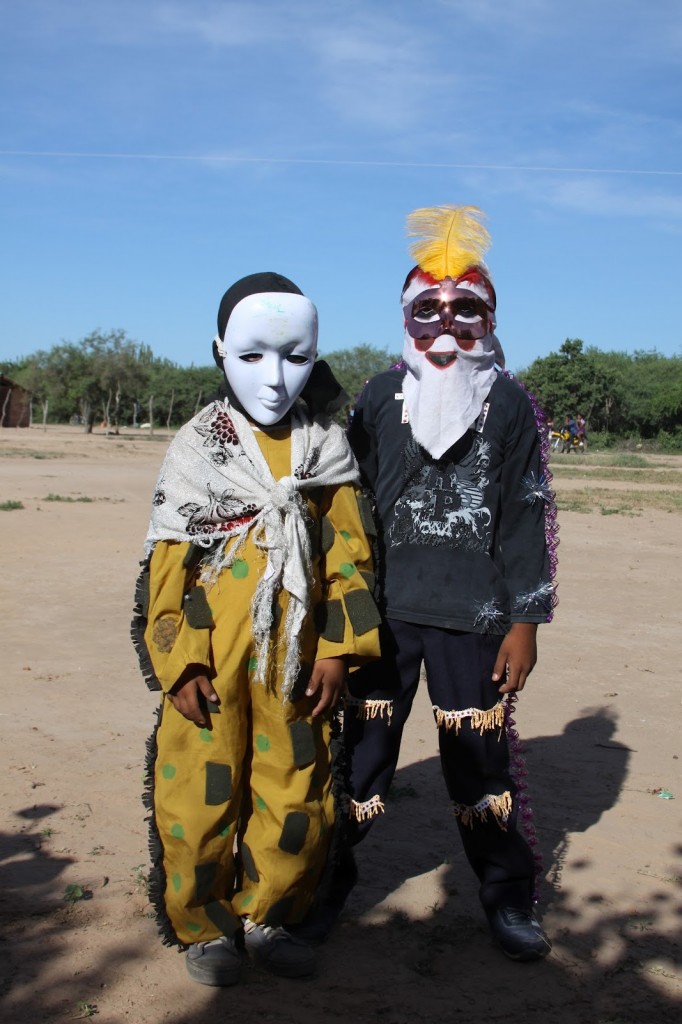EDITOR’S NOTE: The author is finishing up a two year hitch in the Peace Corps doing health counseling in rural Paraguay. He sends Phawker intermittent dispatches of his adventures whenever he gets close enough to civilization for Internet access.
![]() BY ST. JOHN BARNED-SMITH SOUTH AMERICAN CORRESPONDENT Paraguay’s Chaco is a forbidding plain of mesquite, baking heat, and swirling dust. The last time I visited, I promised myself I would never return. But last month, after I heard about the Arete Guazu – a type of indigenous carnaval – I once again found myself spending eight cramped hours on a bus heading north-northwest, bobbing over uneven asphalt, and sweating into the overstuffed upholstery.
BY ST. JOHN BARNED-SMITH SOUTH AMERICAN CORRESPONDENT Paraguay’s Chaco is a forbidding plain of mesquite, baking heat, and swirling dust. The last time I visited, I promised myself I would never return. But last month, after I heard about the Arete Guazu – a type of indigenous carnaval – I once again found myself spending eight cramped hours on a bus heading north-northwest, bobbing over uneven asphalt, and sweating into the overstuffed upholstery.
I arrived in Mariscal Estigarribia, “The heart of the Chaco” (translation – good luck getting home if you miss your bus.) Mariscal is the last major stop before Bolivia, even though it’s still 200k to the border. It’s also the site of the Arete Guazu (Big Party), or the Chaco Carnaval.
The festival is a three day long party. I woke early the first day and drank some mate. It was cool and the sun had barely risen. The normally dusty tracks had flooded with rain from the torrential storms that hit so hard and uncharacteristically frequently last month, turning to the landscape to a sticky goo.
After walking the five kilometers to Santa Teresita from Mariscal, I crossed 100 yards of slimy muck, arriving at the tail end of Mass. Though the Arete Guazu has its roots in Indian harvest festival, the Catholic Church (which came to the region decades ago), has left its mark. The party started with a church service. The priest (or pa’i here) started a “Hail Mary,” and everyone filed out.
Then the dancing started, a three step shuffle, everyone holding hands in a large circle. A group of eight or nine drummers stood off to the side, beating out a steady tattoo. First there was one small circle of the revelers who’d showed up early. But as I watched, dozens of people started trickling in, and the circle became two, three, four. A small cloud of dust appeared, we all kept shuffling. The older woman carried flowers and wore floppy hats.
Traditionally, dancers follow the drummers, who visit every house that prepares Chicha – a traditional, yogurt-y drink made of fermented corn. (And involves chewing the corn and then spitting it into a communal cauldron to ferment. Mmmm, yummy.) An elderly woman walked on the outskirts of the circle, smearing cheeks with white talcum powder. “It represents good,” the pa’i told me. “On the third day [during the cuchi-cuchi] they will smear black on our faces too.” “It has lots of symbolism,” he said, representing the fight between the forces of good and evil. MORE

